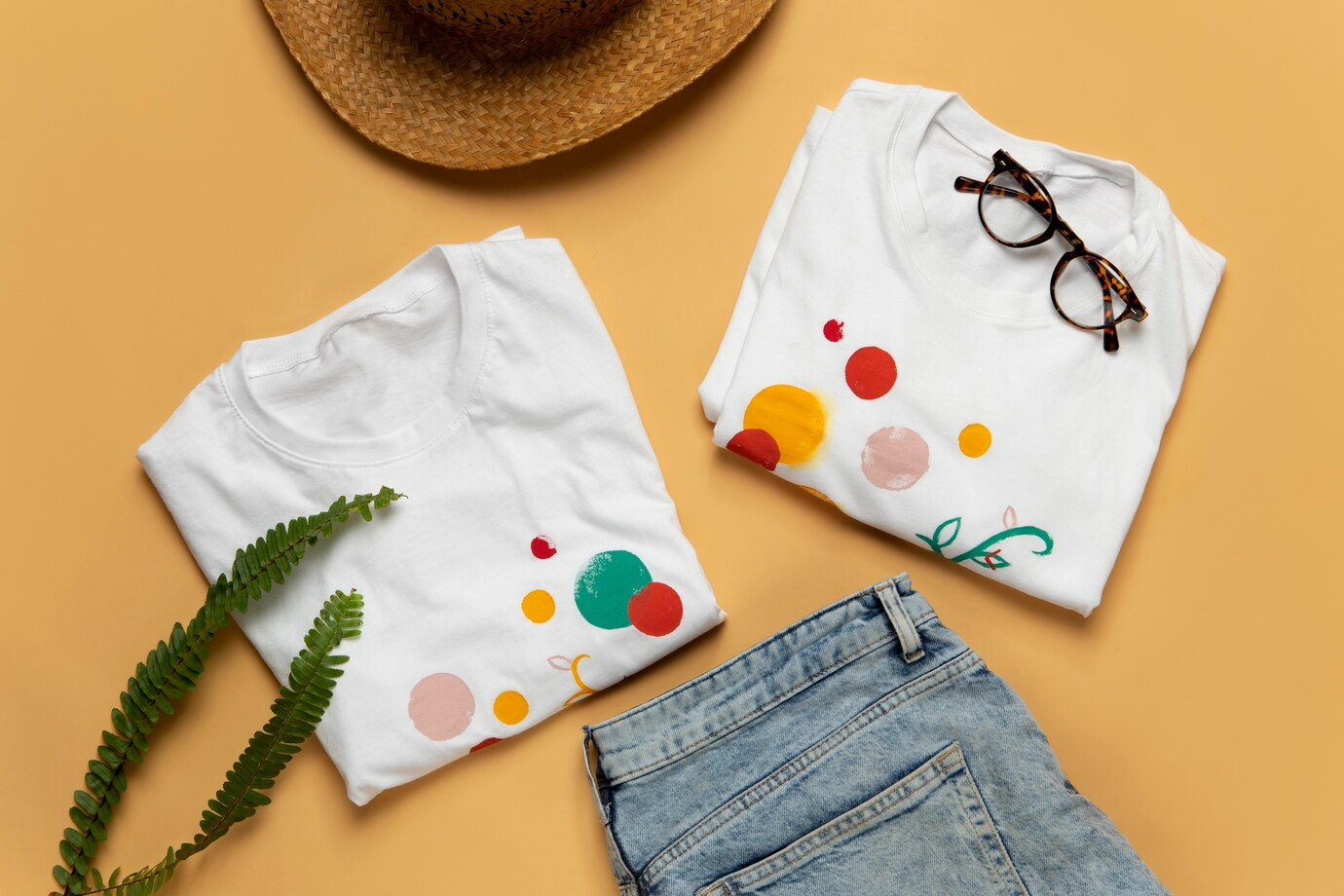The humble t-shirt has undergone a remarkable transformation since its inception, evolving from an unassuming undergarment into a style icon that dominates wardrobes around the world. This versatile piece of clothing has transcended its original purpose, becoming a canvas for self-expression, cultural statements, and fashion statements alike. In this blog post, we’ll explore the journey of the t-shirt, tracing its roots and examining how it has become a staple in contemporary fashion. We will delve into its historical origins, rise in popularity through various cultural movements, significant adaptations over the decades, and its current status as a must-have item in fashion.
The Historical Origins of the T-Shirt
To truly appreciate the evolution of the t-shirt, we must first understand its historical beginnings. The t-shirt’s ancestry can be traced back to the 19th century when it was initially designed as a simple garment intended for practicality.
Early Designs and Utilitarian Purpose
The first iterations of the t-shirt were primarily used as undergarments. Made of lightweight cotton fabric, these early designs provided comfort and ease of movement to laborers and military personnel alike.
In the late 1800s, the U.S. Navy adopted the t-shirt as standard issue, recognizing its practicality during warm weather conditions. It featured short sleeves and a round neckline, which made it ideal for sailors working on deck. This design became commonplace within the military context, laying the groundwork for what we now recognize as the classic t-shirt silhouette.
As the 20th century dawned, the t-shirt began to spread beyond military use. Its simplicity and comfort made it a preferred choice among workers across various industries, from factories to farms.
The Rise of Casual Wear
With the advent of the 1920s and 1930s, societal norms began to shift toward more relaxed styles. The t-shirt emerged as a casual alternative to the more formal shirts of the time.
This decade saw the introduction of printing techniques, allowing for graphics, logos, and messages to be directly applied to fabric. As a result, individuals began to embrace t-shirts not just as undergarments, but as eye-catching statement pieces.
By the end of World War II, the t-shirt had firmly established itself as a popular leisure wear option. An increasing number of people wore them outside the workplace, marking a pivotal moment in the evolution of the t-shirt.
Cultural Influences and Changes
The post-war years ushered in new cultural influences that would shape the trajectory of the t-shirt. The burgeoning youth culture of the 1950s, fueled by the rise of rock ‘n’ roll and cinema icons, embraced the t-shirt as an emblem of rebellion and individuality.
The iconic Marlon Brando famously donned a plain white t-shirt in “A Streetcar Named Desire,” solidifying the garment’s place in the realm of coolness. Similarly, James Dean’s portrayal of youthful angst in “Rebel Without a Cause” further elevated the t-shirt’s status, making it synonymous with defiance and nonconformity.
As the t-shirt continued to gain traction throughout the late 20th century, it gradually shed its utilitarian roots, transforming into a vehicle for personal expression and cultural commentary.
The T-Shirt as a Canvas of Expression
As the t-shirt evolved within society, it transitioned from a simple garment to a platform for communication and artistry. Artists, designers, and brands began to leverage this potential, creating a unique intersection between fashion and art.
The Role of Graphic Design
With advancements in technology, graphic design played a monumental role in shaping the modern t-shirt. Artists could manipulate images, colors, and typography to create visually striking pieces that conveyed messages or showcased artistic talent.
T-shirts adorned with slogans, band logos, political messages, and social commentary began to proliferate. They became a means of expressing identity, beliefs, and affiliations.
For example, the counterculture movement of the 1960s embraced the t-shirt as a form of protest against war and social injustice. Tie-dye prints and peace symbols adorned many garments, fostering a sense of unity among activists.
The Influence of Music and Pop Culture
As music genres flourished over the decades, the t-shirt emerged as a major medium for fandom and cultural celebration. Band merchandise became ubiquitous at concerts and festivals, turning fans into walking billboards for their favorite artists.
Rock bands such as The Rolling Stones and The Ramones capitalized on this trend, creating iconic t-shirts featuring distinctive logos and imagery. Fans proudly wore these shirts, forging a deep connection to the music while simultaneously establishing a sense of belonging within a larger community.
Additionally, celebrities and film stars began endorsing specific t-shirts, further elevating the garment’s status in popular culture. Movies like “Jaws” and “Star Wars” released merchandise that included themed t-shirts, turning them into collectibles.
T-Shirts and Social Movements
Throughout history, the t-shirt has served as a powerful tool for social change. From the feminist movement advocating for gender equality to LGBTQ+ rights campaigns, individuals have utilized t-shirts to raise awareness and share their stories.
Slogans like “Black Lives Matter” or “Love is Love” printed on t-shirts convey passionate messages that resonate with millions. Wearing these shirts allows individuals to express solidarity and support for various causes while igniting conversations surrounding important social issues.
As a result, the t-shirt has become synonymous with activism, providing a tangible way to advocate for change and inspire others to join the movement.
The T-Shirt in Fashion History
As the t-shirt carved its niche in society, it found its way onto runways and into the closets of fashion enthusiasts. Designers recognized the potential of the t-shirt to blend comfort with style, leading to innovative interpretations of this classic garment.
High Fashion Meets Streetwear
In recent decades, there has been a seismic shift in fashion sensibilities, where high fashion and streetwear converge. Luxury brands began to incorporate t-shirts into their collections, often reimagining them with avant-garde designs and premium materials.
Dior, Balenciaga, and Off-White are just a few examples of brands that have successfully elevated the t-shirt from casual wear to haute couture. By experimenting with silhouettes, fabrics, and embellishments, these designers have transformed the t-shirt into a coveted luxury item that often comes with a hefty price tag.
Furthermore, the blending of streetwear aesthetics with high-end fashion has led to the emergence of personalized t-shirts, allowing consumers to showcase their uniqueness while embracing designer labels.
Celebrity Endorsements and Collaborations
The role of celebrity endorsements cannot be underestimated in the evolution of the t-shirt. Fashion icons like Rihanna, Kanye West, and Beyoncé have all leveraged their influence to create exclusive t-shirt lines that sell out rapidly.
Collaborations between celebrities and brands have resulted in limited-edition tees that blur the lines between art, culture, and commercialism. For example, the collaboration between Supreme and Louis Vuitton launched a frenzy, highlighting the immense demand for collaborative merchandise that celebrates both the t-shirt’s legacy and the prestige of luxury fashion.
Moreover, celebrities have taken to social media platforms to showcase their personal t-shirt collections, influencing countless followers to emulate their style choices. This phenomenon has turned the t-shirt into a symbol of aspiration and trendiness in modern fashion.
Sustainability and Ethical Considerations
As the fashion industry faces growing scrutiny regarding sustainability, the t-shirt finds itself at the forefront of discussions surrounding ethical production practices. Consumers are increasingly conscious of fast fashion’s impact on the environment, leading to a shift toward sustainable materials and local manufacturing.
Brands that prioritize eco-friendly practices, such as organic cotton sourcing and fair labor conditions, are resonating with environmentally-conscious consumers. T-shirts crafted from recycled materials have also emerged, offering stylish alternatives that contribute positively to sustainability efforts.
In addition, initiatives like “Buy One Give One” programs encourage consumers to engage in responsible purchasing behaviors, enabling them to contribute to social impact while enjoying fashionable t-shirts.
The Modern-Day T-Shirt Landscape
In today’s world, the t-shirt is woven into the fabric of society, serving as a reflection of individualism, culture, and current events. It has fostered a sense of community while also sparking debates about fashion and identity.
Customization and Personalization
The rise of e-commerce and digital printing has democratized fashion, allowing consumers to customize and personalize their t-shirts more than ever before. Online platforms enable individuals to design their own tees, choosing colors, prints, and slogans that reflect their unique personalities.
This surge in customization fosters a spirit of creativity and self-expression. It transforms the t-shirt into a personal statement—an opportunity for individuals to tell their stories and showcase their interests.
Digital and Virtual Fashion Trends
With the advent of technology, the concept of fashion has expanded beyond traditional boundaries. Virtual fashion shows and augmented reality experiences have introduced a new dimension to t-shirt design and marketing.
Digital fashion designers create virtual t-shirts that can be worn by avatars in online spaces or social media platforms. This trend embodies a fusion of technology and creativity, catering to a generation that values digital representation and experimentation.
The Future of the T-Shirt
As we look ahead, the future of the t-shirt remains bright and full of possibilities. Its adaptability ensures that the t-shirt will continue to evolve alongside changing fashion trends and societal shifts.
Innovations in textile technology may lead to even more eco-friendly materials, while collaborations between artists, influencers, and brands promise to push the boundaries of t-shirt design. As a symbol of culture, comfort, and identity, the t-shirt will likely remain a staple in wardrobes around the globe.
Conclusion
The evolution of the t-shirt—from its origins as an undergarment to its status as a style icon—illustrates the dynamic relationship between fashion, culture, and identity. The t-shirt serves not only as a basic clothing item but also as a canvas for self-expression, social activism, and artistic innovation.
As we navigate an ever-changing fashion landscape, the t-shirt stands resilient, constantly adapting and reinventing itself to align with the desires and aspirations of individuals worldwide. Its journey reflects broader societal changes, encapsulating the power of a simple garment to transcend its initial purpose and become a symbol of individuality and community.
Whether worn casually, customized for personal flair, or graced with high-fashion embellishments, the t-shirt will undoubtedly continue to be a beloved and essential element of our wardrobes.


